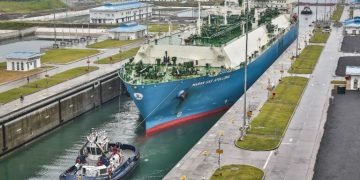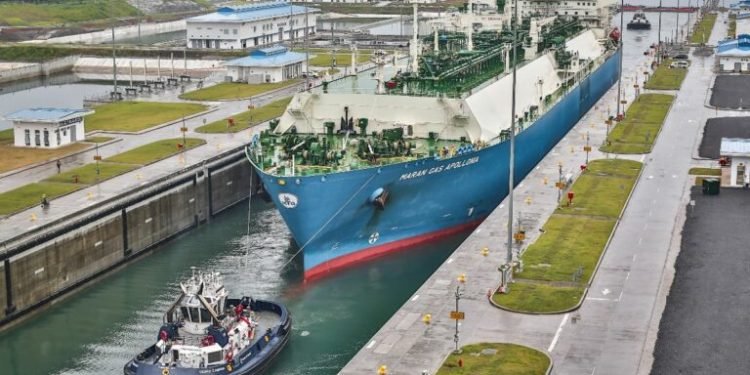By Eva Richardson | The Logistic News
April 9, 2025
In a landmark move to accelerate maritime decarbonization, the Panama Canal Authority (ACP) has signed a Memorandum of Understanding with Stillstrom, a Maersk subsidiary focused on offshore power solutions. This forward-looking agreement signals the start of a joint feasibility study to explore the deployment of offshore vessel charging infrastructure at one of the world’s busiest maritime chokepoints.
Targeting Emissions Beyond the Waterway
Though the Panama Canal is synonymous with efficient global trade, the environmental impact of vessels idling outside the canal has remained a challenge. Ships often wait hours or even days before transiting the canal, running diesel-powered auxiliary engines that emit significant amounts of CO₂, nitrogen oxides, and particulate matter.
The new initiative seeks to address this gap. If implemented, Stillstrom’s offshore charging buoys would allow vessels to plug into clean electricity while waiting, drastically reducing emissions without altering their operational schedules.
Strategic Sustainability in Action
“This collaboration is part of our long-term vision to not only manage vessel traffic efficiently, but also do so responsibly,” said Ilya Espino de Marotta, Deputy Administrator and Chief Sustainability Officer of the Panama Canal. “Offshore charging has the potential to transform how ships power their operations during idle periods.”
The partnership will assess the technical, operational, and environmental viability of deploying such infrastructure, including power delivery, safety protocols, and emissions reductions.
Innovation at the Intersection of Energy and Logistics
Kristian Borum Jørgensen, CEO of Stillstrom, framed the agreement as a bold step toward reshaping maritime energy consumption. “By tapping into offshore renewable power, ports and canals like Panama can help vessels cut emissions even before docking. This isn’t just about reducing fuel use—it’s about redefining the ecosystem of maritime logistics.”
Stillstrom’s charging systems are modular and scalable, powered by renewable sources such as offshore wind farms. This aligns with broader international decarbonization targets and supports shipowners’ efforts to meet upcoming emissions regulations.
A Model for Other Global Hubs?
Industry analysts suggest that if the Panama Canal proves the viability of this system, it could pave the way for similar installations in key maritime hubs around the world—from Singapore to Rotterdam.
“This is exactly the kind of innovation that will shape the future of port logistics,” said a maritime energy consultant familiar with the project. “We’re entering an era where infrastructure must not only support traffic but actively participate in climate solutions.”
Conclusion: Infrastructure That Does More Than Move Cargo
The Panama Canal has long been a symbol of global connectivity. With this move, it is positioning itself at the cutting edge of sustainable innovation. The success of the Stillstrom partnership could redefine not just the transit experience, but also the environmental legacy of maritime trade.
For more in-depth coverage of global decarbonization strategies in shipping and logistics, follow Eva Richardson and The Logistic News on Google News and LinkedIn.























